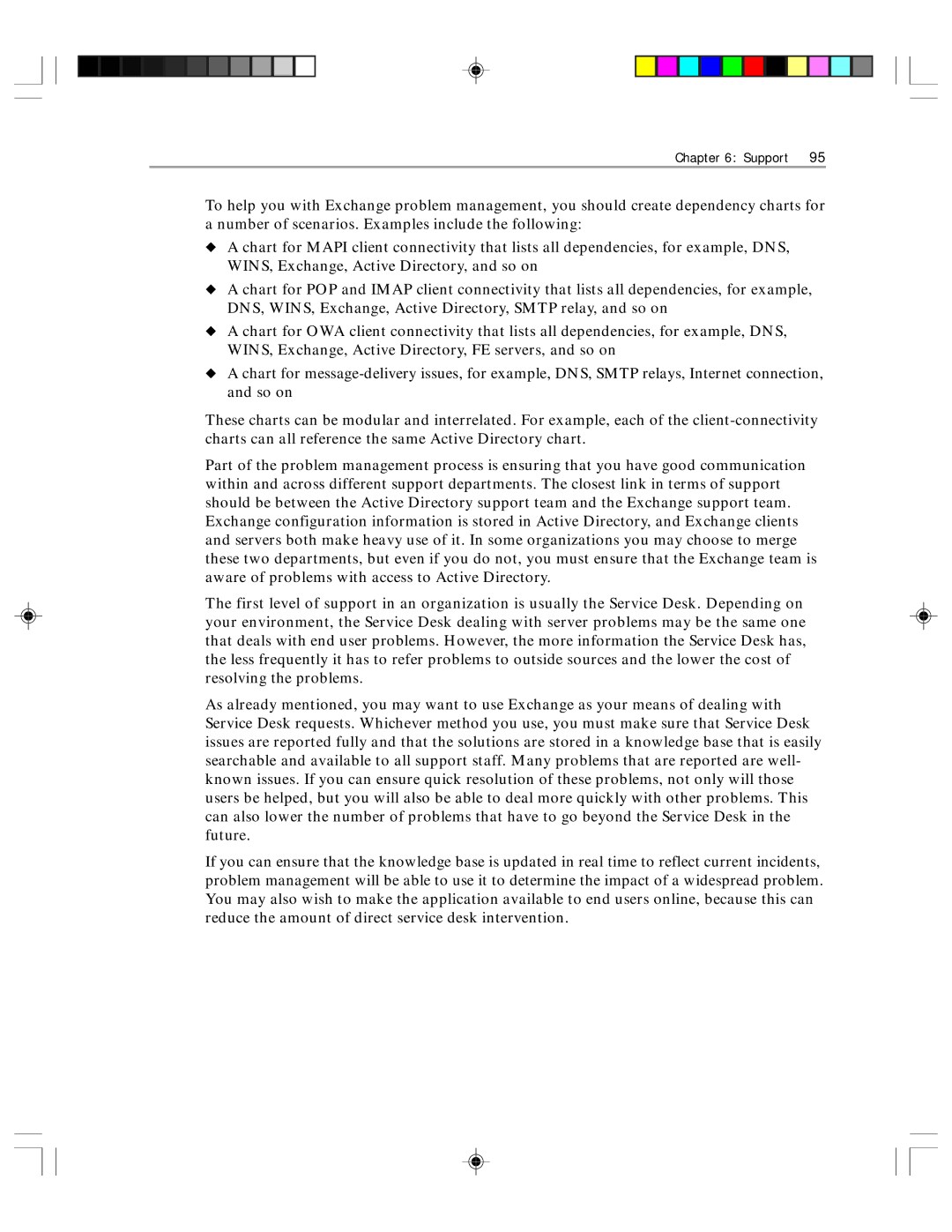
Chapter 6: Support 95
To help you with Exchange problem management, you should create dependency charts for a number of scenarios. Examples include the following:
◆A chart for MAPI client connectivity that lists all dependencies, for example, DNS, WINS, Exchange, Active Directory, and so on
◆A chart for POP and IMAP client connectivity that lists all dependencies, for example, DNS, WINS, Exchange, Active Directory, SMTP relay, and so on
◆A chart for OWA client connectivity that lists all dependencies, for example, DNS, WINS, Exchange, Active Directory, FE servers, and so on
◆A chart for
These charts can be modular and interrelated. For example, each of the
Part of the problem management process is ensuring that you have good communication within and across different support departments. The closest link in terms of support should be between the Active Directory support team and the Exchange support team. Exchange configuration information is stored in Active Directory, and Exchange clients and servers both make heavy use of it. In some organizations you may choose to merge these two departments, but even if you do not, you must ensure that the Exchange team is aware of problems with access to Active Directory.
The first level of support in an organization is usually the Service Desk. Depending on your environment, the Service Desk dealing with server problems may be the same one that deals with end user problems. However, the more information the Service Desk has, the less frequently it has to refer problems to outside sources and the lower the cost of resolving the problems.
As already mentioned, you may want to use Exchange as your means of dealing with Service Desk requests. Whichever method you use, you must make sure that Service Desk issues are reported fully and that the solutions are stored in a knowledge base that is easily searchable and available to all support staff. Many problems that are reported are well- known issues. If you can ensure quick resolution of these problems, not only will those users be helped, but you will also be able to deal more quickly with other problems. This can also lower the number of problems that have to go beyond the Service Desk in the future.
If you can ensure that the knowledge base is updated in real time to reflect current incidents, problem management will be able to use it to determine the impact of a widespread problem. You may also wish to make the application available to end users online, because this can reduce the amount of direct service desk intervention.
